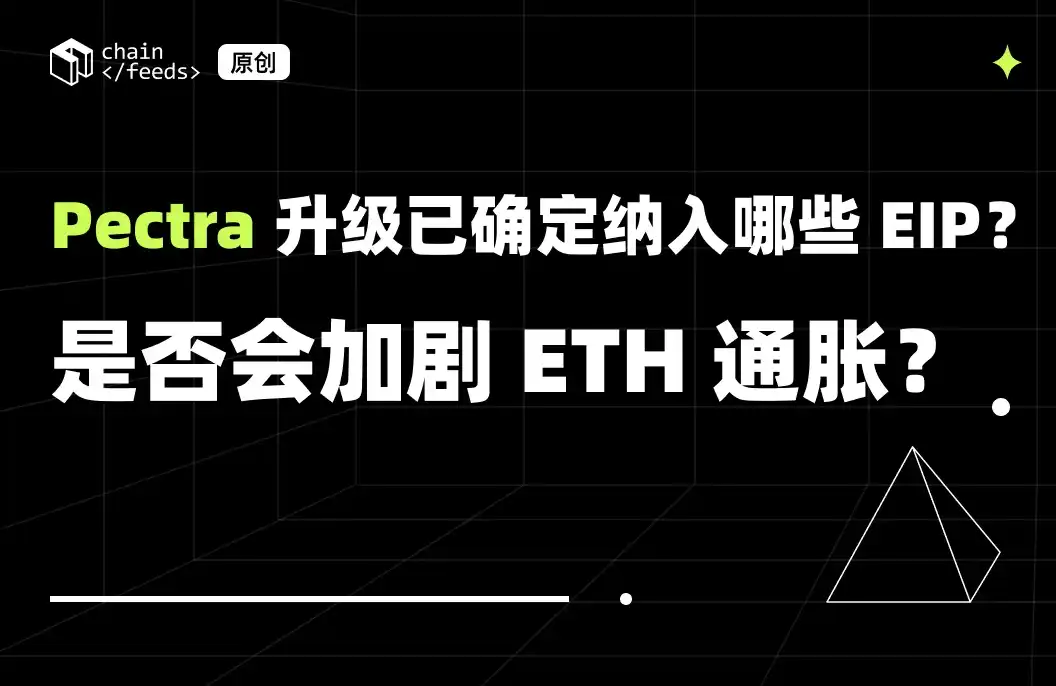
The $KILO token serves as the native cryptocurrency of KiloEx, a decentralized exchange (DEX) specializing in perpetual futures trading. KiloEx aims to enhance trading efficiency and reduce costs through features like zero gas fee trading and multi-chain support. 
Current Market Performance:
As of April 3, 2025, $KILO is trading at approximately $0.060866 USD. The token has experienced an intraday high of $0.072662 USD and a low of $0.06012 USD. This reflects a slight decrease of 0.00084% from the previous close.
Future Importance of $KILO :
The potential significance of $KILO in the future is influenced by several factors: 
1. Platform Adoption and Growth:
• KiloEx has introduced innovative features such as zero gas fee trading through smart contract optimization, aiming to reduce user costs by up to 90%. 
• The platform supports multiple blockchains, including BNB Chain and opBNB, with plans to expand to others like Solana, facilitating seamless cross-chain trading. 
2. Token Utility:
• Governance Participation: $KILO holders can engage in platform governance, influencing decisions and future developments.
• VIP Privileges: Token holders may receive trading fee discounts ranging from 10% to 40%, based on their VIP level. 
• Airdrop Eligibility: Holding $KILO may qualify users for future airdrop activities, providing additional token rewards. 
3. Market Sentiment and Analyst Projections:
• Analysts have varying price predictions for $KILO . Some forecasts estimate the token could trade between $0.12637 and $0.15812 by the end of 2025. 
• However, it’s important to note that these projections are speculative and depend on market conditions and platform performance.
Considerations for Potential Investors:
• Market Volatility: The cryptocurrency market is highly volatile. $KILO ’s future value will depend on KiloEx’s ability to deliver on its promises and gain user adoption. 
• Due Diligence: Investors should conduct thorough research into KiloEx’s development progress, team credentials, and overall market trends before making investment decisions.
• Regulatory Environment: As with all cryptocurrencies, regulatory changes can impact the token’s utility and value.
In summary, $KILO ’s future importance is closely tied to KiloEx’s success in the decentralized trading space. The token’s utility within the platform and the adoption of KiloEx’s innovative features will play significant roles in determining its long-term value.
Sustainable Cities: Innovations and Strategies for a Greener Future
As the world grapples with climate change, environmental degradation, and social inequality, sustainable cities have become a beacon of hope for a better tomorrow. By embracing innovative strategies and technologies, cities can reduce their ecological footprint, enhance the quality of life for residents, and drive economic growth.
*Key Innovations in Sustainable Cities*
- *Smart City 2.0*: This approach prioritizes human-centric design, engaging residents in the planning process to create more livable and sustainable cities.
- *Green Infrastructure*: Incorporating natural elements, such as parks and green roofs, to mitigate urban heat islands and improve air quality.
- *Renewable Energy*: Transitioning to solar, wind, and other renewable energy sources to power cities and reduce carbon emissions.
- *Sustainable Transportation*: Implementing electric or hybrid vehicles, improving public transportation, and promoting walkable and bikeable cities.
*Strategies for Sustainable City Development*
- *Community Engagement*: Encouraging citizen participation in decision-making processes to ensure that city development aligns with community needs.
- *Green Building*: Promoting energy-efficient and sustainable building practices to reduce energy consumption and emissions.
- *Waste Management*: Implementing effective waste management systems to minimize waste and promote recycling.
- *Urban Planning*: Designing cities with sustainable transportation systems, green spaces, and mixed-use development to reduce the need for personal vehicles.
*Benefits of Sustainable Cities*
- *Improved Air and Water Quality*: Reducing pollution and promoting a healthier environment for residents.
- *Increased Energy Efficiency*: Lowering energy consumption and reducing greenhouse gas emissions.
- *Enhanced Quality of Life*: Creating vibrant, livable cities with access to green spaces, public transportation, and community amenities.
- *Economic Growth*: Attracting businesses and talent to sustainable cities, driving economic growth and innovation.¹ ² ³
# __The Rise of Sustainable Cities: Innovations and Strategies for a Greener Future__
As the world grapples with the challenges of climate change, urbanization, and environmental degradation, sustainable cities have emerged as a beacon of hope. Sustainable cities are designed to minimize their environmental footprint, promote social equity, and foster economic growth. In this article, we'll explore the innovations and strategies driving the rise of sustainable cities.
# Innovations in Sustainable City Development
Several innovations are transforming the way cities are designed, built, and managed:
1. *Green Buildings and Architecture*: Sustainable building materials, energy-efficient designs, and green roofs are reducing energy consumption and carbon emissions.
2. *Smart Grids and Energy Management*: Advanced energy management systems, smart grids, and renewable energy sources are optimizing energy distribution and reducing waste.
3. *Electric and Autonomous Vehicles*: Electric and autonomous vehicles are reducing emissions, improving air quality, and enhancing transportation efficiency.
4. *Urban Agriculture and Green Spaces*: Urban agriculture, green roofs, and community gardens are promoting food security, reducing urban heat islands, and enhancing biodiversity.
# Strategies for Sustainable City Development
To create sustainable cities, governments, businesses, and citizens must work together to implement effective strategies:
1. *Integrated Urban Planning*: Holistic urban planning approaches consider social, economic, and environmental factors to create sustainable, resilient cities.
2. *Community Engagement and Participation*: Involving citizens in decision-making processes ensures that their needs and concerns are addressed, fostering a sense of ownership and responsibility.
3. *Public-Private Partnerships*: Collaborations between governments, businesses, and NGOs can leverage resources, expertise, and funding to drive sustainable city initiatives.
4. *Innovative Financing Mechanisms*: New financing models, such as green bonds and impact investing, are emerging to support sustainable city projects.
# Benefits of Sustainable Cities
Sustainable cities offer numerous benefits, including:
1. *Improved Quality of Life*: Sustainable cities provide clean air and water, green spaces, and a high quality of life for citizens.
2. *Economic Growth and Job Creation*: Sustainable city initiatives can stimulate local economies, create jobs, and attract businesses and investments.
3. *Climate Change Mitigation and Adaptation*: Sustainable cities can reduce greenhouse gas emissions, improve energy efficiency, and enhance resilience to climate-related disasters.
4. *Social Equity and Inclusion*: Sustainable cities can promote social equity, inclusion, and access to resources, services, and opportunities.
# Conclusion
The rise of sustainable cities is a beacon of hope for a greener, more resilient future. By leveraging innovations and strategies, governments, businesses, and citizens can work together to create sustainable cities that prioritize environmental stewardship, social equity, and economic growth.
# Recommendations
1. *Develop Integrated Urban Plans*: Encourage holistic urban planning approaches that consider social, economic, and environmental factors.
2. *Invest in Sustainable Infrastructure*: Prioritize investments in green buildings, renewable energy, and sustainable transportation systems.
3. *Foster Community Engagement and Participation*: Involve citizens in decision-making processes to ensure that their needs and concerns are addressed.
4. *Promote Public-Private Partnerships*: Encourage collaborations between governments, businesses, and NGOs to drive sustainable city initiatives.
5. *Support Innovative Financing Mechanisms*: Explore new financing models, such as green bonds and impact investing, to support sustainable city projects.
From Web2 to Web3: How Blockchain is Taking Over the Gaming Industry
The gaming industry has always been at the forefront of digital innovation. From pixelated arcade machines to high-definition consoles and global eSports tournaments, gaming evolves rapidly. But the biggest shift yet may not be about graphics or gameplay—it’s about ownership, decentralization, and empowerment. This shift is happening through Web3, and it’s quietly but powerfully disrupting the Web2 gaming giants.
What Are Web2 Games?
Web2 games are the traditional games we all grew up with. Think of Fortnite, Call of Duty, FIFA, PUBG, or Candy Crush. These games are developed and controlled by centralized companies. Players spend time, money, and effort to earn in-game rewards—but those rewards stay locked inside the game. If the servers go down or the game gets discontinued, all progress and purchases vanish.
In Web2:
• You don’t own your in-game assets (skins, weapons, coins).
• You can’t trade or sell your items freely.
• Game developers control everything, including rules, updates, and even banning players.
• Players don’t earn anything real, even after months or years of gameplay.
This system works well for big studios, but it leaves players with limited control, no real ownership, and zero financial upside.
Enter Web3: The Game-Changer
Web3 is the next evolution of the internet—decentralized, user-owned, and powered by blockchain technology. When applied to gaming, it transforms players from users into stakeholders. Web3 games are also called “play-to-earn”, “GameFi”, or “blockchain games”.
In Web3 games:
• Players truly own their in-game items as NFTs (non-fungible tokens).
• Assets can be traded, sold, or used across different games.
• Tokens earned in-game have real-world value and can be exchanged for cryptocurrencies or fiat money.
• Communities have a say in game development through DAOs (Decentralized Autonomous Organizations).
It’s not just about playing games anymore—it’s about playing to earn, to own, and to be part of something bigger.
Why Web3 is Taking Over
1. Real Ownership
Imagine you buy a rare sword in a game. In Web2, it’s stuck in that game. In Web3, that sword is an NFT in your wallet. You can trade it on marketplaces like OpenSea or use it in another compatible game.
2. Play-to-Earn Models
Games like Axie Infinity, Gods Unchained, and Illuvium allow players to earn crypto by completing tasks or winning battles. During the peak of Axie Infinity, some players in the Philippines made a full-time income just by playing.
3. Interoperability
Web3 allows games to connect through shared standards. Your character skin or weapon from one game could be used in another. This creates a metaverse-like ecosystem, where value travels with you.
4. Community Governance
With tokens, players can vote on game updates, rules, and development direction. This makes games more player-centric and democratic.
5. Transparency
Blockchain records every transaction publicly, which ensures fairness in rewards, trades, and competition.
Examples of Web3 Games Disrupting the Industry
• Axie Infinity: Brought the concept of play-to-earn to the mainstream.
• The Sandbox: A metaverse where users create, own, and monetize gaming experiences.
• Star Atlas: A space-themed MMO built on Solana with NFTs and in-game economics.
• Illuvium: A high-end auto-battler game with AAA visuals and DeFi mechanics.
These games are just the beginning. Major studios and gaming giants like Ubisoft, Epic Games, and Square Enix are already exploring Web3 integrations.
Challenges Web3 Gaming Must Overcome
Of course, it’s not all smooth sailing. Web3 gaming faces real hurdles:
• User experience is still too technical for the average gamer (wallets, gas fees, private keys).
• Scalability can be an issue, especially during traffic surges.
• Skepticism around NFTs and crypto remains in mainstream communities.
• Game quality hasn’t always matched the standards of Web2 AAA titles—but that’s changing fast.
Projects like Immutable X, Arbitrum, and Polygon are addressing these issues by offering faster, cheaper, and more user-friendly Web3 infrastructures.
The Future of Gaming is Hybrid
The future of gaming won’t be a battle between Web2 and Web3—it will be a fusion of the two. We’ll see hybrid games that offer traditional gameplay experiences with blockchain-based ownership and earning systems running in the background.
Imagine Fortnite with NFT skins you can sell. Or a FIFA where your player cards are real, tradable digital assets. These aren’t distant dreams—they’re already being built.
Final Thoughts
Web3 is not just changing how games are played—it’s changing who benefits from them. It’s giving power back to the players, turning time and skill into real value. While Web2 gaming still dominates the market today, the tide is turning. As more developers embrace blockchain technology and more players demand ownership, Web3 will inevitably shape the next era of gaming.
The question is no longer if Web3 will take over gaming—it’s when. $BTC $AI16Z $COMP
Hottest crypto insights and post tariffs reaction
1. 300M had been liquidated on the last 4 hours
2.Fidelity has introduced new nearly fee-free retirement accounts, allowing Americans to invest in Bitcoin, Ether, and Litecoin, with a 1% spread on crypto transactions.
3. $FDUSD briefly depegged by 10% after Justin Sun claimed its issuer, First Digital Trust, was insolvent, leading to $200 million in outflows before stabilizing at $0.98
4.📉 Cryptocurrency Market reaction to tariffs
ВТС : 1.66T | $83,412.27
ETH : 222.50B | $1,824.86
XRP : 120.12B | $2.02
BNB : 84.92B | $596.07
SOL : 63.18B | $121.52
▸ Total Cap: $2.71T ▼1.34%
▸ 24H Volume: $107.73B ▼39.04%
▸ BTC Dominance: 61.8% ▲
▸ ETH Dominance: 8.3% ▼
▸ ETH Gas: 0.88 Gwei
📈 Index Performance
▸ CMC100: $165.25 ▼1.07%
▸ Altcoin Index: 16/100
⚡ Market Sentiment
▸ Fear & Greed: 24/100 (Extreme Fear)


 最低價
最低價 最高價
最高價 
















































Gas 社群媒體數據
過去 24 小時,Gas 社群媒體情緒分數是 3,社群媒體上對 Gas 價格走勢偏向 看漲。Gas 社群媒體得分是 0,在所有加密貨幣中排名第 753。
根據 LunarCrush 統計,過去 24 小時,社群媒體共提及加密貨幣 1,058,120 次,其中 Gas 被提及次數佔比 0.01%,在所有加密貨幣中排名第 366。
過去 24 小時,共有 656 個獨立用戶談論了 Gas,總共提及 Gas 67 次,然而,與前一天相比,獨立用戶數 增加 了 53%,總提及次數減少。
Twitter 上,過去 24 小時共有 1 篇推文提及 Gas,其中 0% 看漲 Gas,100% 篇推文看跌 Gas,而 0% 則對 Gas 保持中立。
在 Reddit 上,最近 24 小時共有 2 篇貼文提到了 Gas,相比之前 24 小時總提及次數 減少 了 0%。
社群媒體資訊概況
3